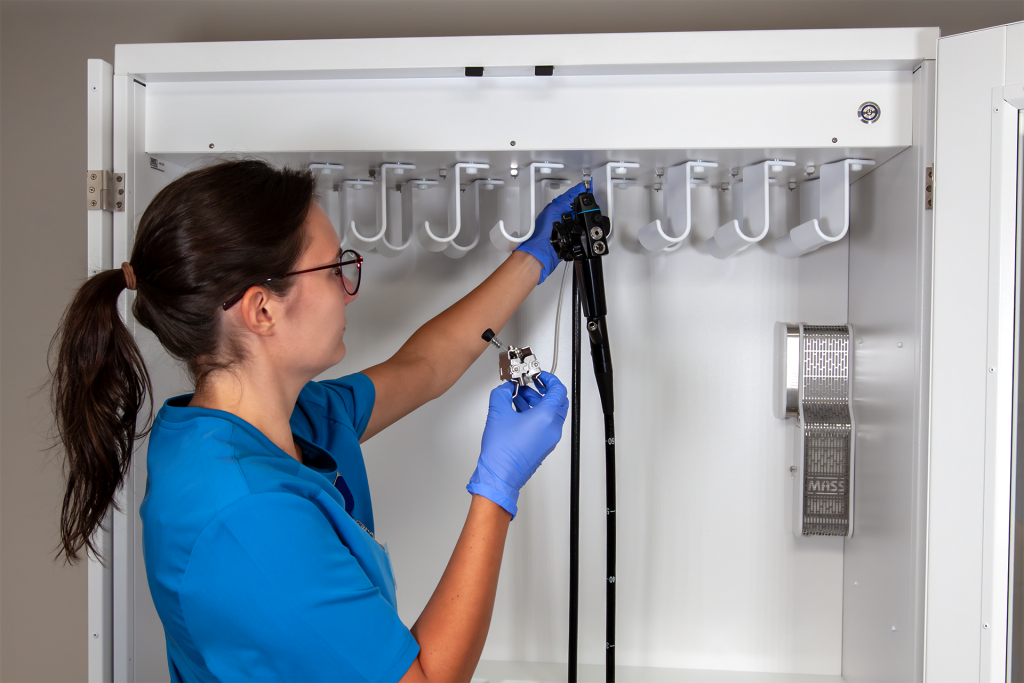
Endoscopy is an essential tool for diagnosing and treating serious gastrointestinal conditions. Naturally, endoscopy procedures are common across a variety of clinical settings. As common as endoscopy is, it presents a unique risk for infection, especially given the rise of drug-resistant “superbugs” in recent years.
Because endoscopy procedures are performed so frequently (nearly 20 million each year), we’ve often assumed that they present an extremely low risk of infection. In reality, infections occur far more frequently than previously thought. A Johns Hopkins study determined that the infection rate during a routine colonoscopy is about one in 1,000—a far cry from the conventional wisdom that puts the infection rate at one in a million.
The Food and Drug Administration has approved a limited number of single-use endoscopy units. However, most procedures are still performed using traditional, reusable equipment. This means that careful pre- and post-procedure cleaning and disinfecting protocols are clinicians’ primary defenses against potentially deadly infections. The most significant risk for infection comes from cross-contamination of GI flora that persists across patient procedures.
A multicenter study at facilities in Tehran, Iran, showed that Pseudomonas aeruginosa, Escherichia coli, and Klebsiella pneumoniae are the most prevalent bacteria found to persist in endoscopes. It’s important to note that the equipment studied was reprocessed and ready for use in inpatient procedures. Most of the bacteria discovered in the study were classified as multidrug-resistant organisms (MDRO). A similar study in The Netherlands also revealed that bacterial contamination persists after equipment is reprocessed and prepared for patient use.
Several factors can impact the risk of cross-contamination. Human error in the reprocessing process plays a role, but other variables can also impact the risk. For example, if endoscopes retain small amounts of water at the end of the disinfection process, microorganisms may have the opportunity to grow while the equipment is drying.
Clinical managers and other healthcare leaders can address the risk of cross-contamination from multiple perspectives. When an outbreak of endoscopy-associated infections occurred in a U.S. hospital, the clinical staff at Johns Hopkins Hospital immediately evaluated its equipment and cleaning procedures. As a result, the team adjusted its cleaning protocols, adding initial disinfecting steps that are carried out in the procedure room.
The stakes are high for cross-contamination events and endoscopy-associated infections. An incident can have severe and even fatal consequences for patients. For clinical facilities, outbreaks disrupt patient care, increase staff stress levels, and add significant operating costs.
Policy-setting and training are top priorities for clinical leaders as they seek to address the risk of infection. In recent years, the Association for the Advancement of Medical Instrumentation (AAMI) and the American National Standards Institute (ANSI) have developed new endoscope sterilization guidelines. The ST91:2021 guidelines establish a comprehensive set of protocols for ensuring that endoscopy equipment is adequately cleaned and sanitized to ensure patient safety and proper operation.
A notable revision in the ST91:2021 guidelines emphasize the critical importance of the drying environment. Previous guidelines have focused on manual cleaning, inspection, and high-level disinfection processes. Because even a small amount of moisture can provide a breeding ground for infectious bacteria, the most thorough sanitation may be undone if the equipment is not properly dried and stored.
The best way to ensure endoscopes are properly dried and disinfected is to use purpose-built cabinets to dry and store endoscopes. Drying cabinets include features like forced instrument-grade air, HEPA filtration, and positive pressurization. These cabinets promote thorough drying while
protecting the equipment from environmental debris or additional contaminants. They are designed as all-in-one drying and storage solutions that enhance efficiency and patient safety.
Standard endoscope storage cabinets provide organization as well as some protection from environmental contaminants but do not include forced air or filtration features. Capsa’s TruAir™ drying and storage solutions are fully configurable, so clinical leaders can combine drying and storage cabinets in a variety of capacities to fit their facility’s needs and budget.
TruAir™ solutions also provide optional tracking capabilities to accurately and efficiently track endoscope drying and hang time. Fully integrated software and hardware make it simple to track, record, and report endoscope cleaning and disinfection processes. All of Capsa’s TruAir™ products are the most highly compliant in the industry. TruAir™ drying cabinets are specifically designed to adhere to the updated ST91:2021 guidelines.
The risk of endoscopy-associated infections is a non-trivial concern for clinical managers and other healthcare leaders. However, we now have better tools than ever to combat cross-contamination and mitigate the risks. Capsa Healthcare is a trusted partner for clinical leaders as they update their approach to endoscopy procedure safety. We’re happy to assist you as you assess your needs and design a solution that addresses your current challenges and will grow with you as you meet future challenges.